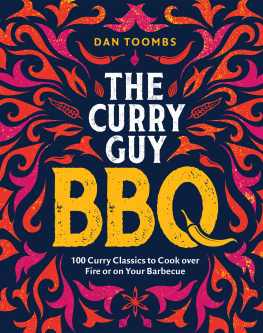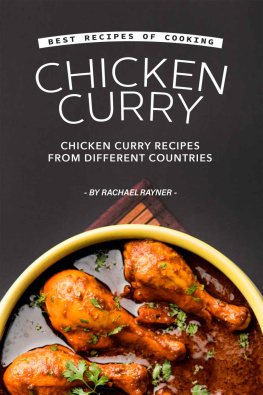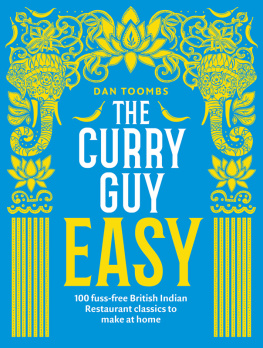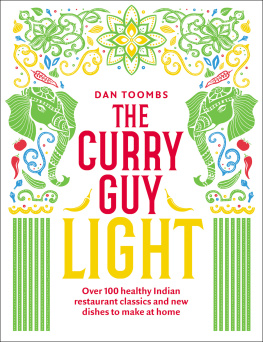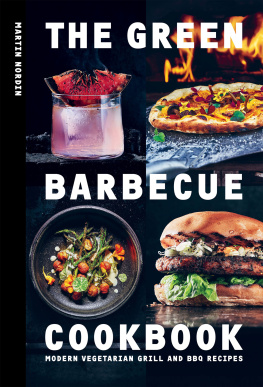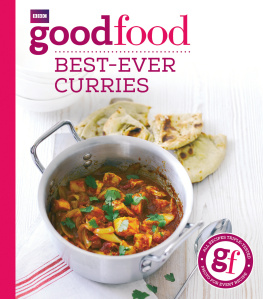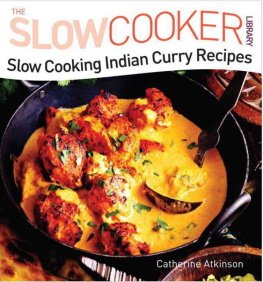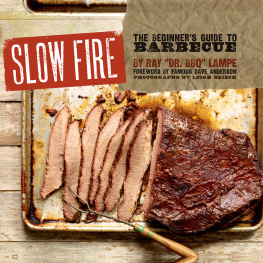

Cooking over fire has played a big part in my life. I have so many fantastic memories of get-togethers with family and friends, standing around a campfire or barbecue and cooking up a feast. There are few things better than bringing together a group of people to enjoy delicious food.
My earlier cookbooks all feature a barbecue section, but I wanted to take things further and include recipes that you might not have considered for a weekend barbecue, which is why I decided to write this book.
When most people think of a barbecue, they picture a kettle-style barbecue that can be used for both indirect and direct heat cooking. If you have one, you will be able to make the majority of the recipes in this book but I have also included recipes that go beyond the standard barbecue set-up; these recipes can most often be tailored to the barbecue you have or a campfire.
Nowadays, its easy to forget that in the not-so-distant past, all cooking was done either over fire outdoors or with a wood-fuelled oven indoors. I can still remember going to my great-grandmothers house and watching her light up her wood-burning stove to cook dinner. What was once a daily chore for our ancestors is now something we look forward to as a weekend activity.
I mention this because everything you can cook inside in a modern kitchen can be cooked outside, too. Cooking outdoors with wood or charcoal can be a lot of fun and personally I think the food tastes better as well. Thats right curries, tandoori recipes and even fried and steamed foods taste better when cooked over a live fire, just as they are all over the Indian subcontinent and at restaurants and food stalls here in the West.
I have been so inspired by street-food vendors and chefs who have opened their kitchens to me, both in the UK and abroad. Watching them cook roasts, skewered meats, paneer, vegetables and even frying over a log or charcoal fire made me want to do this at home. Knowing that many readers of my cookbooks like a good curry-house-style curry, Ive included a section on cooking these on the barbecue.
At my house, we barbecue year-round. Even our Christmas turkey is cooked on the barbecue, regardless of the weather, and these recipes are far too good to be seasonal! For this reason, I have provided cooking temperatures where possible, as well as the internal temperatures you should be aiming for (after all, barbecuing is all about cooking to temperature, not time), which can be followed whether you are cooking outside on the barbecue or inside using an oven.
It was important to me that these recipes remain simple and authentic to their origins. At times this was tricky. Burying a whole chicken wrapped in banana leaves in a pit of red-hot charcoal to cook for a couple of hours isnt something most people are going to be able to try. Recipes that are traditionally cooked in a tandoor oven would be of little use to those who dont have one. With this in mind I have kept the recipes simple and without the need to dig any holes or run out to purchase a tandoor.
If you have any questions about the recipes in this book, please get in touch through my social media channels. Getting to know the people who read my books is one of the things I enjoy most about writing them. Im @TheCurryGuy on Twitter, Facebook and Instagram and Id love to hear from you. You might also like to join my Facebook group, Curry Chit Chaat. Its a great community and Im almost always on hand to answer questions.

To help you find the recipes you might like to try, I have labelled them with these badges.
 | Gluten-free: The good news for people that need to stick to a gluten-free diet is that most of my recipes are naturally gluten-free. |
 | Vegetarian: Look for this badge to find some of my favourite vegetarian recipes. Most of the sauces in the British Indian Restaurant-style chapter are also vegan; others can be made so by switching to non-dairy alternatives. |
 | 30 minutes or less: Look for this badge if you want to prepare something quickly. However, this does not include the time it takes to light your barbecue, or passive preparation such as chilling or marinating or making any special marinades or pastes. |
 | Direct heat: This badge indicates that a recipe is cooked directly over the coals of your barbecue. This is grilling and its the easiest method for outdoor cooking. You will find more information on cooking over direct heat opposite. |
 | Indirect heat: You will need a barbecue with a lid to cook over indirect heat. This cooking method is used for smoking, barbecuing and roasting. See more on . |
BARBECUES AND GRILLS
No matter what size your barbecue is, the principle is always the same: fuel, fire and oxygen create heat. Adjusting the amount of fuel you use and the amount of oxygen that gets to your fire will determine how hot it is. Its really that simple. But when you are just starting out, you will need to get to know your barbecue and how best to use it.
Below is a breakdown of the most popular types of barbecue and grill on the market. If you have a kettle or ceramic barbecue, youll be able to cook pretty much every recipe. If all you have is a small grill without a hood, youll find plenty of recipes you can make with that, too.
KETTLE BARBECUES
Almost everyone will recognize the Weber kettle barbecue, as it has been the most popular barbecue for home cooks for decades. These barbecues are affordable and are great for both direct and indirect heat .
CERAMIC BARBECUES
Ceramic barbecues are all the rage now, and for good reason: they offer a cooking experience that is far superior to the standard kettle barbecue. I love my Kamado Joe. These barbecues are built with ceramic materials, which means you get a more even cook, because the ceramic interior heats up and radiates that heat from all sides like a tandoor, unlike standard metal kettle barbecues, which cook mainly from the bottom. Ceramic barbecues also heat up much faster and to hotter temperatures than other barbecues and maintain your preferred cooking heat more easily. Whats more, if you need to lift the lid to baste meat, the barbecue wont cool down. It will get back up to heat in no time because of the hot ceramic.
Another bonus with ceramic barbecues is that there is no need to place a drip pan of water in it when cooking over indirect heat, other than to keep the barbecue clean.
GRILLING AND SKEWER BARBECUES
Anyone who follows my blog will know that I am also a big fan of THROS tabletop grills and their kebab attachments. These are excellent for preparing food over direct heat. For larger, more elaborate cooks, I love the Kadai Firebowl, !
SMOKE PELLET BARBECUES
These fantastic barbecues are fuelled with small wood pellets that feed the fire and give off a great smoky flavour. The most popular ones are made by Traeger and couldnt be easier to use. Pellet barbecues are perfect for indirect roasting and barbecuing while you have to watch the cooking temperature of kettle and ceramic barbecues carefully, with pellet grills you can simply set the temperature you require, place whatever it is youre roasting or barbecuing on the rack and leave it to do its job. On the downside, they arent great for searing and other direct heat cooking, but a small tabletop grill along with your pellet grill will solve that issue.
Next page
